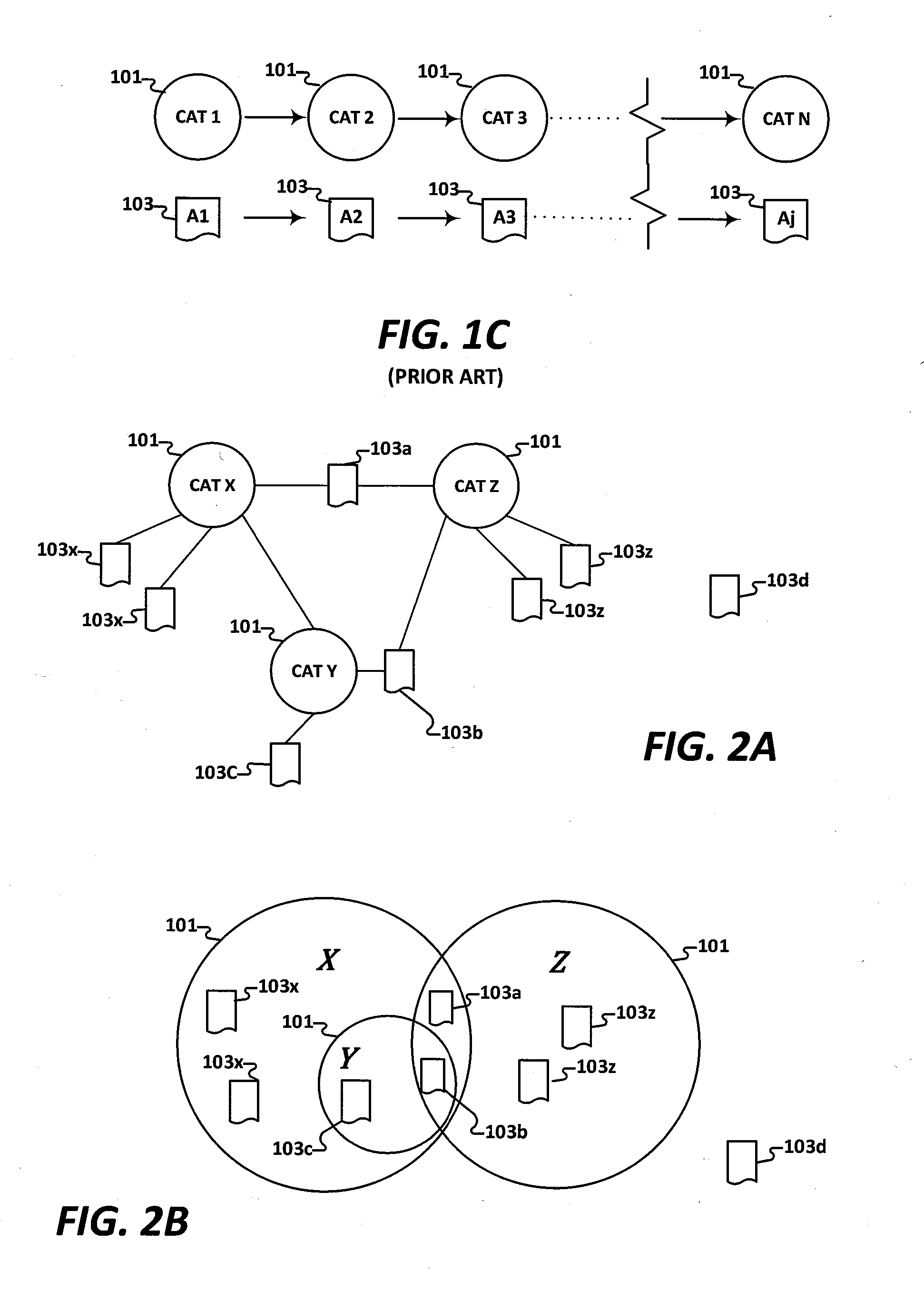Dialectical Information Architecture Project
The Dialectical Information Architecture Project develops a novel framework for organizing, navigating, and evolving complex information systems. Built on a synthesis of traditional information architectures—hierarchical, organic, and sequential—the project introduces a three-plane model that integrates:
- Structure – Logical relationships among categories and information atoms (e.g., documents, data points)
- Flow – Sequential presentation and traversal of information, akin to narrative or data streams
- Dialectic – The evolution of ideas via thesis, antithesis, and synthesis, embedded into the architecture itself
Originally formulated to support human learning and cognition through structured personal information systems, the architecture is designed to mirror the movement of thought. Each piece of information can be associated with multiple intersecting categories, enabling flexible and context-sensitive organization. Flows—narrative, data, or otherwise—can traverse the structure freely, while the dialectical plane captures the development of meaning as new connections and contradictions arise.
The second phase of the project introduced fuzzy set theory to enable quantitative data integration. This “fuzzified” dialectical architecture allows for partial membership in categories, supporting sensor-based data, uncertainty, and graded information. The structure naturally supports real-time updates, visibility filtering to combat information overload, and user interfaces that allow for intuitive traversal and synthesis of ideas.
Applications include:
- Personal and collaborative knowledge management
- Human-computer interfaces that adapt to cognitive structure
- Robotic systems integrating symbolic and sensor data
- Systems for curating, traversing, and evolving complex informational domains
Key Contributions:
- A mathematically defined, navigable graph structure derived from recursive intersections of categories
- A method for representing and traversing dialectical processes within an information system
- A fuzzy logic extension enabling integration of quantitative and qualitative data in a unified architecture
- A design for UI/UX principles based on minimizing overload while preserving depth and discoverability

Venn diagram for the categories X, Y, and Z with the corresponding organic hierarchy defined via (crisp) set relations. Hidden relations are dashed. X and Z cover Y, which is hidden at the top level. X ∩ Z covers Y ∩ Z, so at Z, Y is hidden.
Publications

- Picone, Rico, Bryan Powell, and Jotham Lentz. "Dialectical Information Architecture". US20180060417.

- Picone, Rico A.R., Jotham Lentz, and Bryan Powell. "The Fuzzification of an Information Architecture for Information Integration". 10273, Lecture Notes in Computer Science: 145-157.

- Picone, Rico A.R. and Bryan Powell. "A New Information Architecture: A Synthesis of Structure, Flow, and Dialectic". 9172, Lecture notes in computer science: 320-331.
Grants
-
CAREER: Insight in Cyber-Human Systems via a New Information Architecture
The defining challenge of the Information Age is that of an excess: how can sense be made of so much information? For the information worker (e.g., engineer, intelligence analyst, biologist) in this milieu, the dizzying task of wading through the information in cyber-human information systems (CHIS) has been shown to negatively impact many aspects of life, from professional effectiveness, efficiency, and innovation to personal wellbeing. With the communication and application of information now being some of the primary tasks of employees in the developed world, the human impact is as broad as it is deep. Moreover, the automated gathering of information has dramatically increased the severity of this "information overload." The principal investigator (PI) has introduced a new information architecture to address this challenge. There are three facets of this architecture that give it the potential to overcome information overload. First is its innovative structure, which incorporates the navigability of hierarchical architectures (e.g. computer file-systems) and the flexibility of organic architectures (e.g. tagging systems). Second is its incorporation of flow: the sequential aspect of information such as text, audio, and video. The dialectical architecture enables information to “flow” through the information structure. Third is the incorporation of dialectic: the evolution of information. Together, these three yield an information architecture that can provide insight—the uncovering of something hidden, and perhaps even unexpected, in the following manners: the structure leverages automated categorization (tagging), allows logical navigation that compacts visible information at each level, and defines a metric on the information space that describes how “near” atoms of information are to each other; the flow allows the contents of (say) a video stream to be distributed throughout the information system and be discovered through structure navigation; the dialectic enables a user to develop their information system systematically by clarifying where new information intersects old information. Today's students have precisely the same challenge with CHIS. They employ ad hoc methods to cope, but these still leave approximately 80 percent of students reporting information overload. We are now prepared to state the primary project objective. It is the primary objective of this project to overcome the challenge of information overload in cyber-human information systems through the application of the dialectical information architecture. There is significant overlap between the challenges of information overload in education with those of information overload in CHIS. The same method of applying the new information architecture introduced by the PI will be applied to both challenges, and the overlap of the challenges will conserve resources.
Dr. Picone's Role: Principal Investigator
Amount Requested: $570,022.00
Funding Agency: National Science Foundation (NSF)
Submission Date: July 2016
CRII: CHS: Insight in Human-Robot Teamwork via a New Information ArchitectureThe project is a response to the challenges in human-robot teams presented by human "information overload"—too much information to process, understand, and apply. The primary objective of the project is to overcome these challenges through the application of a new information architecture, first introduced by the PI and called the dialectical architecture (DA). Methods There are three facets of this architecture that give it the potential to overcome information overload. First is its innovative structure, which incorporates the navigability of hierarchical architectures (e.g. computer file-systems) and the flexibility of organic architectures (e.g. tagging systems). Second is its incorporation of flow: the sequential aspect of information such as text, audio, and video. The DA enables information to "flow" through the information structure. Third is the incorporation of dialectic: the evolution of information. Together, these three yield an information architecture that can provide insight—the uncovering of something hidden, and perhaps even unexpected, in the following manners: the DA-structure allows category navigation that compacts visible information at each level such that the user is not overwhelmed; the DA-flow allows the contents of (say) a video stream to be distributed throughout the information system with arbitrary granularity and be discovered through DA-structure navigation; the DA-dialectic enables systematic information system evolution by automatically highlighting where new flows intersect old flows and enabling user-directed flow synthesis (e.g. new data streams relevant to a scientific article). Objectives Concrete objectives required to achieve the primary objective include: 1. Develop a probabilistic algorithm for computing the DA-structure that would enable a DA-structure to be computed with a specific confidence level. 2. Develop an effective discretization scheme that enables categorization of quantitative, continuously varying datastreams. 3. Simulate datastreaming in a human-robot interaction environment. 4. Develop a DA-based human-robot team interface called roboDIS. 5. Prepare the way for the analytic study of the effects of roboDIS on human-robot teamwork.
Dr. Picone's Role: Principal Investigator
Amount Requested: $174,149.00
Funding Agency: National Science Foundation (NSF)
Submission Date: August 2016
Research Themes
Artificial Intelligence
Exploring the architectures and symbolic frameworks that underlie intelligent behavior in machines. This theme bridges classical and contemporary AI approaches—including logic, language models, and neural architectures—with a special focus on how AI systems represent knowledge, make decisions, and relate to human users. Psychoanalytic theory is used to interrogate assumptions about mind, subjectivity, and trust.
Augmented Cognition
Designing systems that enhance or extend human cognitive capacities through real-time feedback, machine learning, and symbolic modeling. This theme investigates how computational and robotic systems can support learning, decision-making, and self-reflection. It draws on psychoanalytic theory to understand the structural dynamics of attention, desire, and thought, and on engineering to design systems that operate in synchrony with embodied cognition.
Human-Computer and Human-Robot Interaction
Exploring the symbolic, embodied, and ethical dimensions of interaction between humans and intelligent systems. This theme examines the mutual shaping of humans and machines—how robotic and AI systems are interpreted, trusted, and engaged with by humans, and how those systems can be designed to accommodate subjectivity, ambiguity, and ethical asymmetry.
Robotics
Designing, modeling, and analyzing robotic systems that interact with and adapt to the physical world. This theme encompasses autonomous mobile robots, manipulation, and human-robot collaboration. Emphasis is placed on real-time operation, sensorimotor integration, and the philosophical implications of embodied agency.



